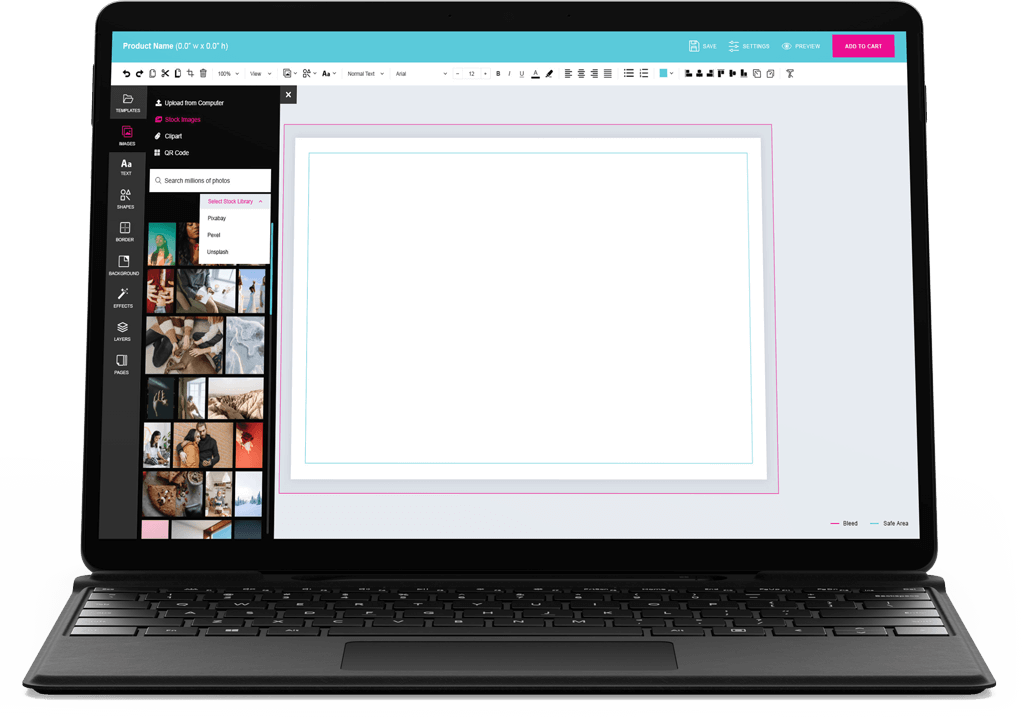Within the current fast-paced online environment, web-to-print solutions have emerged as a game changer for the print sector. This innovative approach has been transforming how printing businesses and companies approach their operations, allowing them to offer custom , tailored solutions to their customers in ways that were not available before. From simplifying order management to improving the overall customer experience, these solutions are revolutionizing the printing industry by making it more efficient and accessible.
As we delve into various case studies showcasing effective implementations of web-to-print, we will explore the key benefits that these solutions offer. Through understanding the critical features to consider and the distinctions between web-to-print and conventional printing techniques, print shops can better position themselves for success. This piece will showcase actual examples of how businesses have effectively harnessed web-to-print to enhance their workflows, reduce costs, and expand their operations, all while fulfilling the growing demand for customized products in the marketplace.
Understanding Web2Print Software
Web-to-print software represents a strong instrument that streamlines the print production procedure by enabling customers to submit purchases through the web. This innovation allows production businesses to develop an efficient and accessible system in which users can customize their printing orders, submit files, and oversee their purchases with ease. By connecting the chasm between e-commerce and conventional printing, web-to-print systems are growing essential for contemporary print shops striving to boost their services.
The expansion of digital commerce has altered customer needs, with consumers increasingly demanding ease and individualization. Web-to-print software addresses these needs by offering features such as web-based design applications, order processing software, and streamlined workflow capabilities that improve the total client engagement. This software not only enables customers to tailor their items but also enables print shops to coordinate purchases, track print runs, and maintain accurate supplies in actual time.
As the graphic arts sector proceeds to develop, grasping the essential components and capabilities of Web to Print solutions is important for companies that aim to continue competitive. Elements such as effectiveness, tailoring, and integration with digital marketplaces determine the success of these solutions. The appropriate Web to Print program can enable print shops to satisfy purchases at a higher speed, cut costs, and eventually boost client happiness while setting the stage for prospective development in a rapidly evolving environment.
Benefits and Features of Web-to-Print
Online print solutions delivers notable advantages that streamline operations for print shops and businesses. One of the main benefits is the ability to improve order management and workflow efficiency. By streamlining processes, companies can minimize human errors and eliminate delays, thereby speeding up production times and improving client satisfaction. With integrated tracking and management features, businesses can readily manage the order lifecycle from entry to fulfillment, ensuring a seamless experience for both staff and staff and clients.
Personalization and personalization are at the core of web-to-print systems, enabling customers to tailor products to their specific preferences. This capability not only empowers customers but also opens up new revenue streams for businesses by allowing them to offer customizable products such as branded merchandise and personalized prints. Additionally, features like variable data printing allow for targeted marketing campaigns, boosting the effectiveness of promotional materials and improving customer engagement.
Furthermore, implementing online printing technologies can lead to substantial savings. By transitioning to a more efficient and effective process, printing businesses can reduce waste and lower operational costs. Cloud-based solutions offer additional benefits, such as scalability and reduced need for heavy technology support. These features make it easier for businesses to adjust to market changes, innovate their offerings, and remain competitive in an constantly changing industry landscape.

Integration and Future Trends in Web-to-Print
The integration of online printing software with online shopping platforms is a revolution for the print industry. As businesses increasingly move online, the ability to seamlessly connect print solutions with e-commerce systems enables a smooth ordering process. https://output.jsbin.com/bekibojuki/ can enhance their customer experience by offering personalized products, with customers easily uploading their designs or choosing from customizable templates. The ease of managing print orders directly from an online store not only simplifies operations but also attracts to a digitally adept consumer base.
In the future, several trends are influencing the future of Web-to-Print solutions. The incorporation of AI and machine learning technologies promises to optimize workflows, reduce errors, and provide greater insights into customer preferences. These innovations allow print service providers to offer more flexible and agile services while adapting quickly to market demands. Furthermore, the rise of mass customization will enable consumers to dictate more personalized experiences, driving print businesses to explore creative offerings that address individual tastes.
Sustainability is increasingly becoming a focus for consumers and businesses alike, shaping the evolution of Web-to-Print technologies. Solutions that highlight eco-friendly practices, such as reducing waste and using sustainable materials, will gain traction. As more companies focus on green initiatives, those that successfully incorporate sustainability into their Web-to-Print workflows will not only satisfy customer expectations but also position themselves as leaders in a rapidly changing industry landscape.
